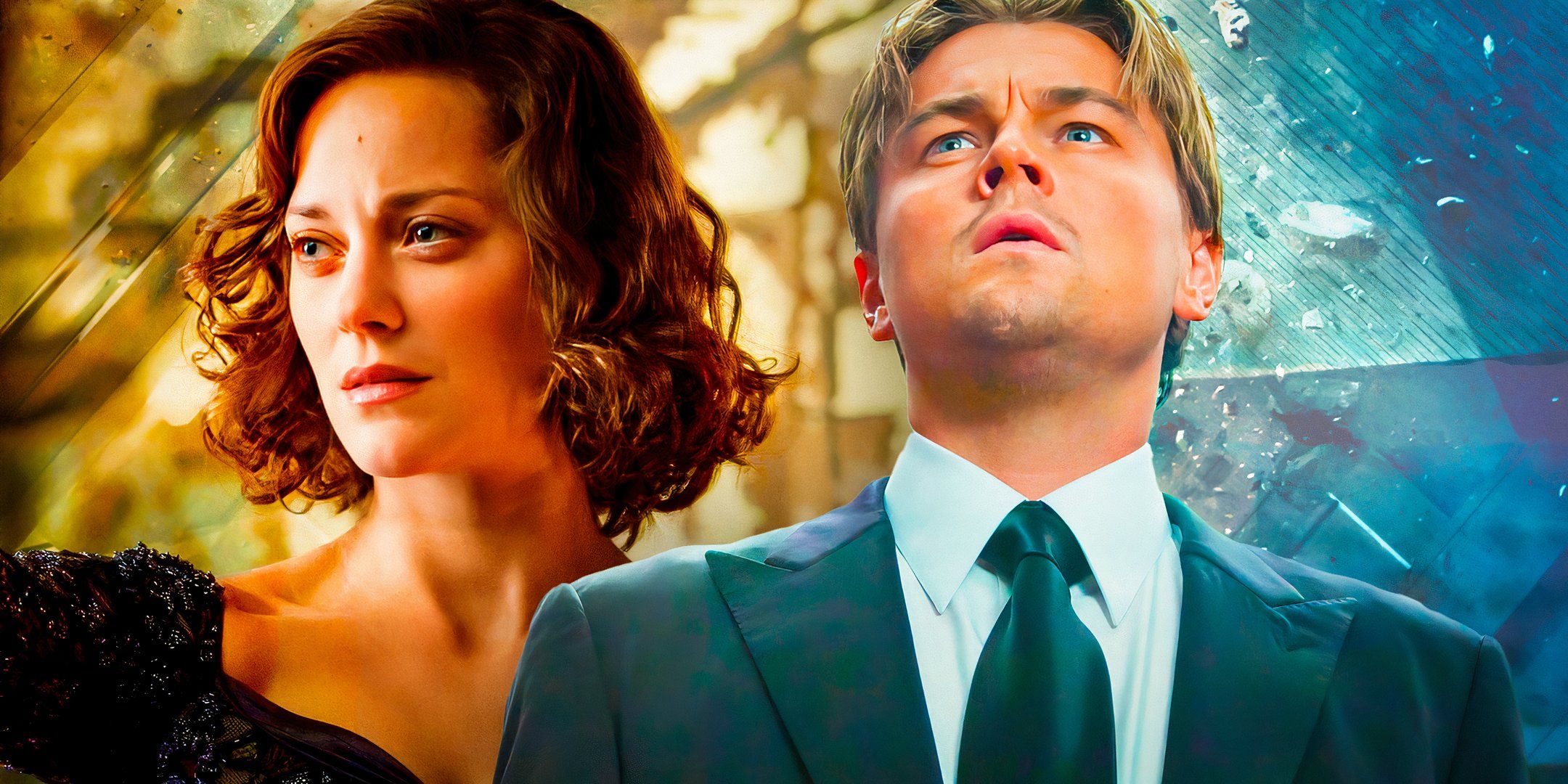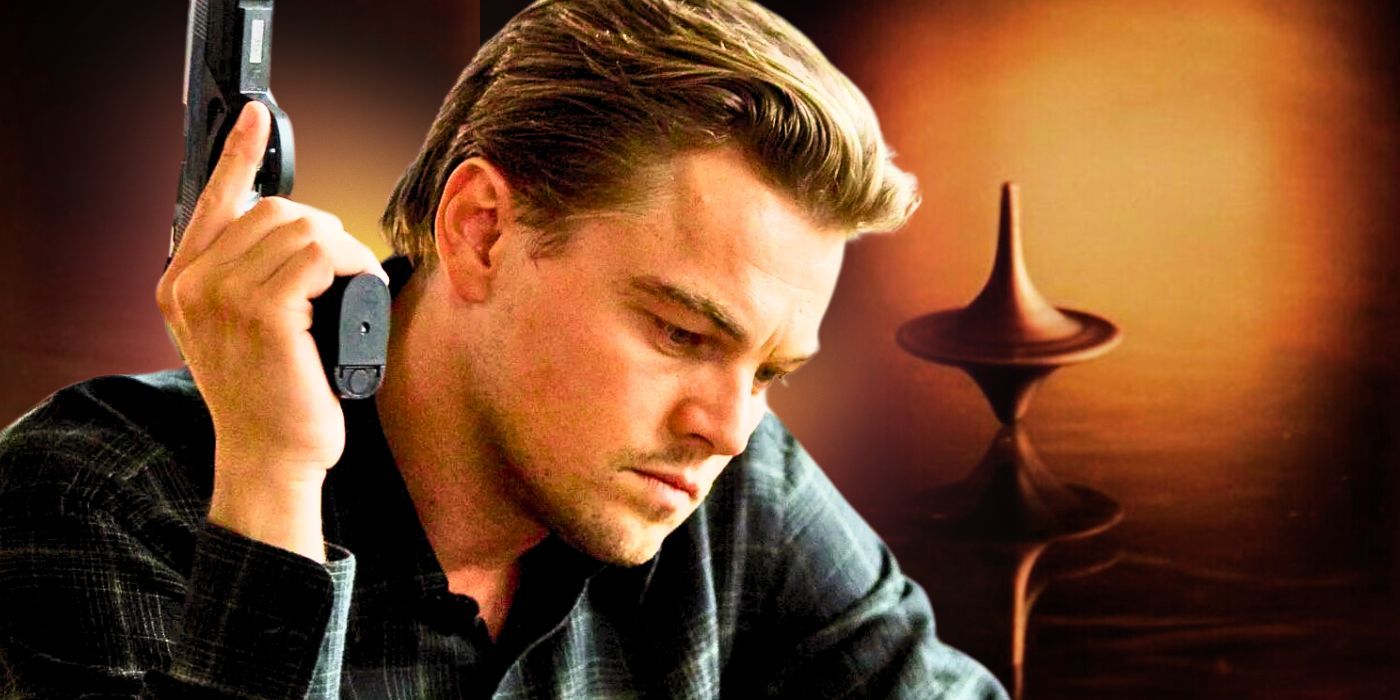Trigger Warning: The following article contains mention of suicide.
Summary
- Mal’s presence in Cobb’s subconscious represents his guilt and drives the intricate plot of Inception.
- Before her death, Mal’s belief that her reality was not real led to a tragic decision.
- Cobb’s struggle with Mal’s ghost in his dreams reflects his guilt and need to overcome his past.
Cobb’s wife, Mal, is an essential feature of Inception, but what exactly happened to her, and why does Cobb see her after her death? The 2010 sci-fi action movie bends the concepts of reality, immersing audiences into several layers of the subconscious to the point that it’s difficult to tell what is or is not actually happening. At the center of this is the character of Mal (Marion Cotillard), who represents the painful guilt of Cobb’s (Leonardo DiCaprio) subconscious. The character herself had died before the story in Inception began, but the film slowly pieced together how this happened and what it meant for Cobb’s concept of reality.
In Inception, Cobb specializes in extracting information from peoples’ minds using a shared dream technology. At the film’s start, however, he is hired by Saito (Ken Watanabe) to plant an idea in a mark’s head rather than extracting it. With the promise of finally returning to his children in the United States, Cobb accepts the job, puts together a crew, and arranges a heist to take him and his team deep within a dream. However, in the dream worlds of Inception, Cobb’s subconscious, taking the form of Mal, is constantly working to sabotage him—but why?
3:04
Related
3 Most Intriguing Theories for Inception’s Final Scene
Inception’s final scene has puzzled fans for years, but some intriguing theories could explain the mysterious ending.
What Happened To Mal Before Her Death
Cobb & Mal Were Trapped In Limbo
When Mal was alive, she and Cobb were master architects who aimed to stretch the limits of dream sharing to endlessly create and explore. The pair discovered that they could dive into dreams within dreams until they ultimately went too far and ended up in a state of limbo. At this depth, time passed several times faster than in the real world, and Cobb and Mal could feasibly live for an eternity before their real bodies ever woke up. The only solution was to kill themselves while in limbo to emerge into the real world. Unfortunately, Mal had become convinced that limbo was her reality.
Cobb lived with Mal in limbo for 50 years before he finally took drastic action. He found the spinning top—which Mal had used as a totem in Inception to determine reality—hidden away in a safe deep in his wife’s mind. He spun the top and locked it back up, where it continued to spin indefinitely, thus showing Mal that this world wasn’t real. The idea planted through inception was that the only way to emerge into a true and happy life was to die, and it worked. Cobb and Mal killed themselves together in limbo, woke up, and were reunited with their children. However, that top kept spinning in Mal’s mind—the implanted idea continued growing.
That top kept spinning in Mal’s mind—the implanted idea continued growing.
Why Mal Took Her Own Life
Mal Wanted To Return To Her “Real” Life
The idea that her reality wasn’t real and that suicide was the only answer continued to plague Mal. Cobb had no way to stop what he had planted from festering, and he did all he could to fight with his wife and convince her that the world they were in was the real one. However, Mal continued to believe with growing intensity that she and her husband needed to die so that they could wake up and join their real children. When Cobb refused to accept this, she put together an elaborate plan meant to back him into a corner.
Mal arranged her suicide in a way that it would appear that Cobb had murdered her if he didn’t kill himself alongside her. She believed this would incentivize her husband to let go of what she believed to be a dream, making it a place where Cobb could no longer feign happiness. The hotel scene in Inception revealed that when Mal threw herself from the building to her death, she believed that Cobb would have no choice but to follow and that they would once again wake up, this time in a reality where that lingering idea wouldn’t plague her. Of course, she was wrong.

Related
What Inception’s Edith Piaf “Kick” Song Really Means (& Why It’s So Important)
Inception uses Edith Piaf’s song “Non, Je Ne Regrette Rien” as the team’s “kick”, but it has a deeper meaning as it connects with Cobb’s struggles.
Why Cobb Still Sees Mal Throughout Inception
Cobb’s Subconsious Takes Mal’s Shape
Following Mal’s death in Inception, Cobb was overcome with grief and guilt. The idea he had planted in his wife’s mind had acted like a virus, destroying Mal’s perception of reality to the point that she could no longer be happy. She was constantly reaching for truth, never convinced that her children’s faces or the home in which they lived were anything more than a pretty dream. While asleep, Cobb’s guilt was projected as the image of his wife, who sought endlessly to sabotage his goals and draw him back to her. Throughout Inception, Cobb knows Mal isn’t real but can’t resist the temptation to be with her.
While asleep, Cobb’s guilt was projected as the image of his wife, who sought endlessly to sabotage his goals and draw him back to her.
Cobb had spent an entire lifetime in limbo with Mal, and after so long trapped within the depths of his mind, he had lost the ability to dream without the technology of dream-sharing. While not on missions, he would use sedatives to escape within his dreams and spend time with the fake Mal, further feeding into his subconscious’ desire to punish him for the idea that he destroyed his wife. However, the more Cobb spent in these dreams, the harder it was to keep his subconsious—Mal’s ghost—from slipping into his missions and destroying everything.
Mal’s behavior in Cobb’s dreams reflects his own guilt but also continues the sabotage she had enacted in framing her husband for her death.
How Cobb Finally Overcomes Mal’s Ghost
Cobb Finally Let Go At The End Of Inception
At the end of Inception, Cobb is forced to enter limbo again to complete his mission of planting an idea into Fischer’s (Cillian Murphy) mind. This was where Mal’s influence was the strongest. He knew he could spend eternity there with his wife if only he accepted this as his new reality, locking away his totem as Mal had done. However, the same guilt and regret that gave Mal life in Cobb’s mind kept him from doing this. Instead, DiCaprio’s character told the ghost of Mal the truth about the idea he had planted in his real wife’s mind, taking a significant step toward overcoming his regret.
The next step to Cobb overcoming Mal’s ghost was admitting that his subconscious version of her could never amount to the real thing.
The next step to Cobb overcoming Mal’s ghost was admitting that his subconscious version of her could never amount to the real thing. While he could resign himself to this version of reality, it wouldn’t change the fact that Mal’s perfect and imperfect complexities were gone forever. Between working through his guilt and accepting that his dream wasn’t enough, Cobb was ultimately able to resolve his pain and return to the real world.
Of course, there is the lingering question at the end of Inception regarding whether Cobb really was in true reality when he was finally reunited with his children. He used the spinning top to find out for himself, but Cobb was distracted by his kids and walked away, and the movie ended before audiences could see if the top fell or not. Ultimately, it doesn’t actually matter. The point of Inception‘s ending is that Cobb had overcome Mal’s ghostly memory and was willing to get back to living rather than only dreaming of regret. He was finally free.

Inception
Christopher Nolan’s 2010 Sci-fi action film Inception follows a thief who enters the dreams of others to steal information and, after being caught, is given a chance to clean his slate by performing an untested concept – implanting an idea within another mind. An ensemble cast is brought together by former target Saito, who seeks to implant the idea of destroying his own company into his father’s mind. In a complex labyrinth of dreams and untested theories at the forefront, survival is not guaranteed in this psychological heist where the stakes are high, and nothing is what it seems.




